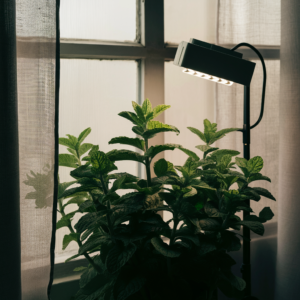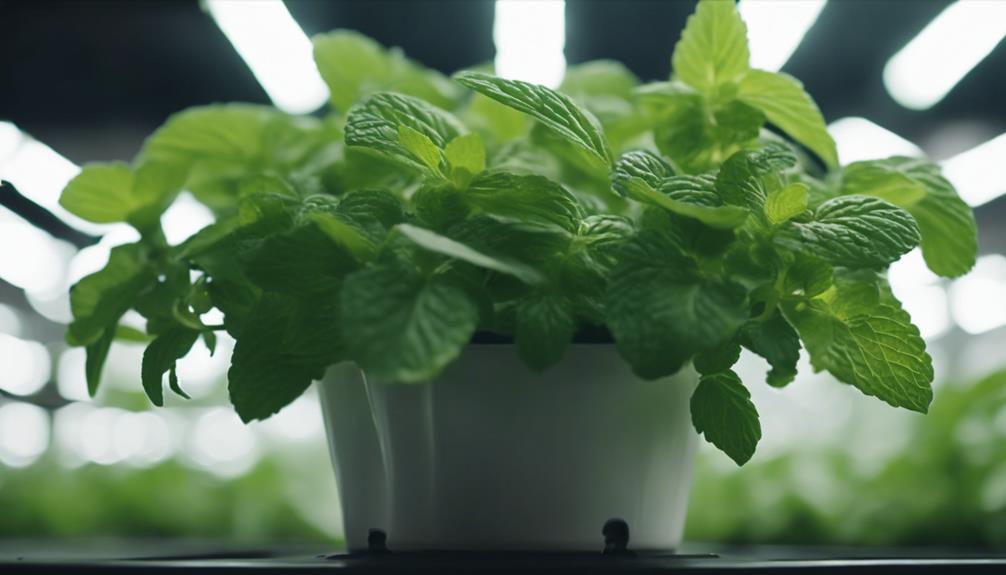How much sun does mint need?
If you’re keen on adding a burst of freshness to your garden with mint, understanding its sun requirements is crucial. Mint plants are versatile, and their need for sunlight is quite particular. When it comes to growing mint outdoors, you’re going to find out about the delicate dance between too much and too little sun.
Mint prefers a cozy spot that nets it about 4 to 6 hours of direct sunlight each day. I’m talking about that gentle morning sunshine, which is often kinder than the harsh afternoon rays. This level of exposure is the sweet spot for mint to flourish without the leaves getting scorched.
Now, mint can be pretty forgiving and can handle partial shade. In fact, if you’re living in an area with a lot of hot, direct sunlight, partial shade can be a lifesaver for your mint. It helps in preventing the leaves from drying out and keeps that vibrant green color we all love.
You can always tell how your mint feels about the sun. If it’s stretching out and looking leggy, it’s probably craving more light. On the flip side, if the leaves are showing signs of yellowing or burning, your mint is waving a white flag for some shade.
Let’s not overlook the role of your local climate when situating your mint outdoors. If you’re in a cooler region, a sunnier spot might be necessary; conversely, hotter areas will require some strategic shading. Adaptability is key, and that might mean shifting your mint’s location as the seasons change.
So let’s dive in and answer the question, how much sun does mint need?
How Much Sun Does Mint Need Indoors? Balancing Sunlight and Shade
Mint is quite the adaptable herb, and if you’re planning on keeping it indoors, you’re going to want to know how to hit that sweet spot of lighting. It’s not just about finding a random sunny spot; it’s about understanding the needs of your mint plant.
When it comes to growing mint inside your home, positioning is everything. You’re going to want to place your mint plant in an area where it can bask in plenty of indirect sunlight or receive morning light, avoiding the more intense afternoon rays.
Now, the reality is natural light isn’t always aplenty indoors. That’s where artificial lights come in handy. Artificial grow lights can fill in the gaps. Aim for about 10 to 12 hours of light; this mimics the natural day cycle, and mint loves that consistency.
You’re likely curious about how to tell if your mint is happy with the light it’s getting. Look out for steady growth and full, vibrant leaves. If the stems are elongating and the leaves are pale, it’s a cry for more light.
And don’t forget, the needs of your mint plant can change with the seasons. As daylight hours wax and wane, be ready to adjust your indoor mint’s exposure. Rotate your mint periodically to ensure it gets light uniformly for even growth. This is part of the dance with an indoor herb garden – staying attuned to your plants’ needs and adapting as those needs shift.
What about Different Varieties of Mint?
Different types of mint have varying sunlight requirements:
- Peppermint: Prefers partial shade but can tolerate full sun if kept well-watered. It’s often used for medicinal purposes and flavoring.
- Spearmint: Thrives in full sun to partial shade. It’s commonly used in culinary dishes and teas.
- Apple Mint: Grows best in full sun but can tolerate partial shade. It’s known for its fruity scent and flavor.
- Chocolate Mint: Can grow in full sun but prefers partial shade, especially in hotter climates. This variety has a distinctive chocolate-like aroma.
- Corsican Mint: Requires partial to full shade and is less tolerant of full sun. It’s a low-growing, ground-cover type of mint.
Modern Mint Mastery: Hydroponics and Grow Lights
When it comes to elevating your gardening game to new heights, hydroponic systems offer a world of possibilities. Mint thrives in these soil-free setups, but it requires an understanding of the nuanced role light plays in plant growth.

Let me guide you through figuring out the ideal intensity and duration of grow lights to ensure your hydroponic mint doesn’t just survive, but flourishes. You’re going to find out about light wavelengths and how they impact the photosynthesis process, tailoring your approach to meet the particular needs of mint.
Choosing the right spectrum of light is crucial for your mint’s development. Generally, mint, like many herbs, prefers light on the blue end of the spectrum for sturdy leaf growth. However, I’ll share insights on why incorporating a full spectrum is beneficial at certain stages.
You might be curious to compare the effects of sunlight and artificial lighting. While sunlight is the gold standard, modern grow lights come impressively close in mimicking its qualities. This is great news for those living in less sunny locales or for the winter months when daylight is scarce.
Lastly, maintaining healthy hydroponic mint isn’t just about providing ample light; it’s about finding the right balance. Too much or too little of it can hinder your plant’s potential. By the end of this section, you’ll know how to read your plants and adjust your grow lights accordingly for that perfect harmony.


